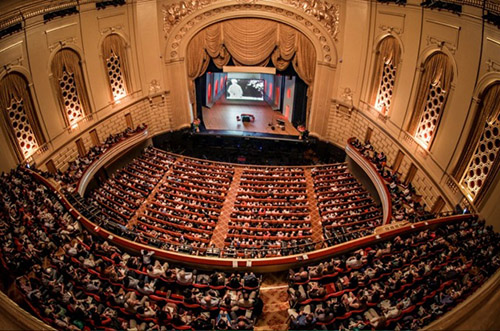
By Tim Redmond
It’s not a secret, and hardly news, that straight White people are a minority in San Francisco. Although the African American population is declining, the number of Asian and Latino residents continues to rise, and as of the 2010 census, 58 percent of the city was a member of one of those three ethnic groups.
And while it’s tricky to get actual estimates on the LGBT population, some studies suggest that at least 15 percent of the city – that’s more than 90,000 people – identifies as LGBT.
Yet the city’s program that gives public funding to the arts seems more of a creature of the 1950s than today.
That’s what an audit by the city’s budget analyst, Harvey Rose, recently found, and it confirms the suspicions and fears of many small arts groups that serve ethnic or queer populations.
The study shows that 76 percent of all funding from the city’s Grants For the Arts Program, which hands out some $11 million a year, goes to organizations dominated by White leadership and predominately serving White audiences.
That’s essentially unchanged in the past 20 years, while the percentage of non-Whites in San Francisco has risen.
In [Fiscal Year] 2010-11,” the report states, “less than one quarter of GFTA funding was allocated to arts organizations classified as people of color, although people of color made up 58 percent of San Francisco’s population in 2010. Asian and Hispanic/Latino organizations received the lowest percentage of funding.”
In fact, since 1990, the study shows, the only significant change in funding patterns is that groups that serve people of color and the LGBT community do worse in tight economic times; all groups are cut when tax money drops, but non-White arts groups get cut more.
“Over the 25-year period,” the report states, “organizations representing people of color received on average 23 percent of GFTA funds, with 19 percent being the minimum received during that period … Beginning in [Fiscal Year] 2006-07, the percentage of funding to people of color organizations has trended downward.”
Part of the problem, small arts groups say, is the amount of money that goes to a handful of big institutions – some of which appeal to primarily White audiences and audiences that are more wealthy than the city as a whole. The San Francisco Opera, for example, is far more able to raise money on its own that a lot of community-based organizations that serve a lower-income audience. And yet, the Opera and the eight other largest arts groups in the city get one-third of all grant money.
Those groups are The SF Ballet, City Arts, the SF Film Society, the Symphony, the Opera, San Francisco Performances, the Exploratorium, the Museum of Modern Art and the American Conservatory Theater.
“GFTA’s practice of awarding public funding based on an organization’s current budget size produces an arts community similar to the national economy, in which the affluent accumulate wealth while the rest of the population struggles to make ends meet,” Andrew Wood, a longtime arts advocate at the San Francisco International Arts Festival, noted in a press statement. “The agency’s policies represent a form of bureaucratic ‘red-lining’: they promote inequality and discrimination without being patently illegal.
In fact, Wood notes, “Once an organization is added to the GFTA roster it typically stays there: some organizations have been on the roster since 1961 when GFTA was founded. But over the past 50 years, while San Francisco, California and the nation have experienced powerful demographic shifts, GFTA’s annual grant awards have consistently reflected the cultural biases of the 1950s: art is for the affluent and hyper-educated; classical music, opera, ballet and big museums are what really matter.”
GFTA is funded from the Hotel Tax; other city departments allocate a total of some $75 million for arts funding.
But nobody tracks how much is going to organizations that target non-White or LGBT audiences or primarily employ gay people or people of color. And since groups that get GFTA money tend to be locked in – once they get grants, they reapply and are funded every year – it’s hard for smaller, more diverse arts groups to get in the door.
The Arts Commission offers Cultural Equity Grants, but the report notes that “there is not a formal program in place to provide people of color organizations with initial funding through CEG, and then to “graduate” them to the GFTA program.”
For generations, the wealthy elite of this city gave their money (and their patronage) primarily to the Big Three – The Opera, the Symphony, and MoMA. All of those institutions are important to the city, and all of them offer tremendous cultural value.
They also have roots in Western values, as Wood puts it, and they have stable performance, display and office spaces (nobody’s going to evict MoMA because the building can be rented for more money to a tech officecan probably do just fine with a little less public money – while smaller community arts groups struggle to survive in a city
I talked to Wood this evening, and he told me that “the first thing that has to happen is that we admit this imbalance is a problem and decide to address it.”
He criticized the bigger arts groups, saying “they have the ability to advocate for the rest of us, and it isn’t happening. They get their money and close the drawbridge.”
He also noted that the city spends a total of $75 million on arts – “but it’s all over the place.” There’s no one central agency that watches spending and checks for cultural equity.
And so, after all these years, it’s not happening.




